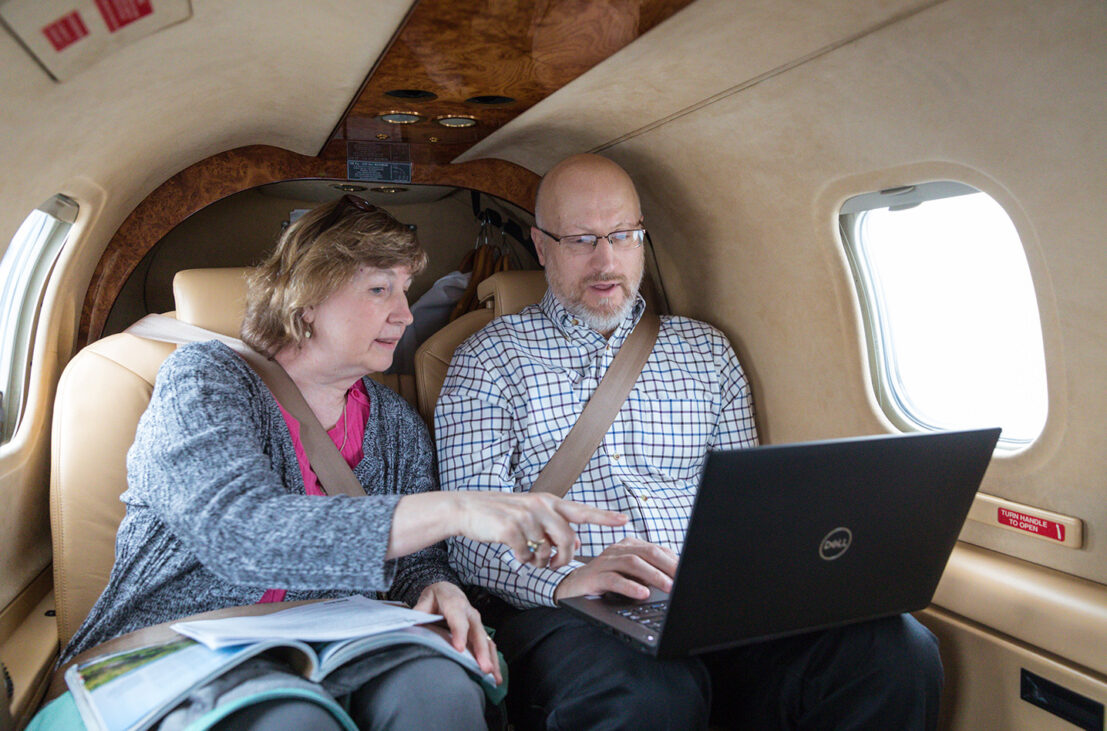
July 17, 2023
Is your aircraft insurable? That is the burning question that was discussed recently at an NBAA Aircraft Operations and Dry Leasing Insurance Summit in Dallas.
As the FAA takes a fresh look at the issue, a diverse group of experts from the insurance, legal and aviation fields gathered to discuss ways to mitigate the continued misuse of dry leasing and what responsibility brokers and underwriters have when issuing aviation insurance policies for dry leases.
“Not all dry leases are bad,” said Tim Allen, Special Emphasis Investigations Team at the FAA. “While dry leasing is an incredibly valuable tool for business aviation when done right, we often see improperly drafted or implemented agreements that lead to illegal operations.”
Aircraft leases are regulated by the FAA in the Federal Aviation Regulations and classified as either “dry leases” or “wet leases.” With a dry lease, the aircraft owner provides the aircraft but not the crew. If at least one crew member is provided in the lease arrangement, it’s a wet lease. Without a specific exemption, a wet lease requires an FAA commercial operating certificate.
The critical component in determining whether an aircraft lease is wet or dry is identifying who has operational control of the aircraft under the arrangement. Whoever has operational control of the aircraft is the person or entity that is responsible for the safety and regulatory compliance of the flight.
Many aircraft owners choose to register their aircraft under a limited liability corporation (LLC) to take advantage of legal protections. This often means that the aircraft must be leased to the operator – which, if done improperly, may constitute illegal charter and render the operations uninsurable.
Lessors and lessees both have the responsibility to ensure that any dry lease is FAA compliant.
For insurers, their No. 1 responsibility is ensuring that their clients are properly insured. So what role, if any, does an insurer have in helping their client ensure their dry lease is FAA compliant?
It comes down to ethical responsibility, says Allen.
“Brokers are not there to give legal advice. But your job is risk management, so you need to ask enough questions,” said David Norton, partner and head of aviation practice at Shackelford, Bowen, McKinley & Norton, LLC. “If they can answer basic questions that’s a pretty good risk analysis. If they don’t have answers, point them in the right direction to learn that information and come back.”
Here are questions you should be asking your client to help clarify who will maintain operational control and ensure a dry lease is legitimate as outlined in the FAA’s Advisory Circular : 91-37B:
- Who makes the decision to assign crewmembers and aircraft, accept flight requests, and initiate, conduct, and terminate flights?
- For whom do the pilots work as direct employees or agents?
- Who is maintaining the aircraft and where is it maintained?
- Prior to departure, who ensures the flight, aircraft, and crew comply with regulations?
- Who decides when/where maintenance is accomplished, and who directly pays for the maintenance?
- Who determines weather/fuel requirements, and who directly pays for the fuel?
- Who directly pays for the airport fees, parking/hangar costs, food service or rental cars?
If your client answers, “me,” to any of the above questions, then they have some operational control and should clarify leasing arrangements accordingly. If your client is not responsible for any of the criteria listed above, then they do not have operational control and the aircraft is considered a wet lease.
If your client is unsure about any of the above criteria, point them to the FAA’s Advisory Circular to ensure any person who is seeking to lease an aircraft understands the meaning of operational control and does not enter into an agreement where operational control is not clearly maintained by the appropriate party.
“If you see something … in the National Airspace System that you believe isn’t right, you should share that information with the appropriate source,” said Alan Stephens, vice president of regulatory affairs, National Air Transportation Association. “You can file a report through NATA’s Illegal Charter Reporting Form or by calling the hotline at 888-759-3581.”
Whether you’re the aircraft owner leasing your equipment, a passenger, pilot, or even insurance underwriter – knowledge is key, and diligence is necessary.
“Your clients need to know that not every dry lease is bad, but there are the things they need to understand,” said Norton. “Talk to your fellow brokers, talk to your fellow underwriters, and make sure they are equipped with the resources to ask the right questions.”
Review the General Aviation Dry Lease Guide, a comprehensive resource created by NBAA and other industry groups, for more information on dry leasing.
Those wanting to learn more about the issue can register a free NBAA News Hour on Thursday, July 20 at 11 a.m. Register today for “Is Your Aircraft LLC Insurable?”


 International Business Aviation Council Ltd.
International Business Aviation Council Ltd.